- Home
- > Nature online
- > Earth
- > The oceans
- > The deep ocean
- > Life on the deep sea floor
Primary navigation
Life on the deep sea floor
The range of animals that live on the deep seabed has only recently been uncovered. They may live thousands of metres down, but they are as diverse as the inhabitants of a tropical rainforest or coral reef. Here are some of them.

Japanese giant spider crab, Macrocheira kaempferi
Depth: 300 - 400m
This is the largest crab in the world, with a maximum leg span of 4m. It is found east of Japan. It is edible and a large fishing industry revolves around harvesting it.
To conserve the species, fishing is forbidden during the spawning season when the crabs move into shallower water and are much more vulnerable.

Venus' flower basket, Euplectella aspergillum
Depth: 10m - 1km
The Venus' flower basket lives on sea floors. It is a sponge that grows fine silica strands for its skeleton, as fine as human hairs. It lives attached to the seabed and feeds on tiny animals that it filters from the water current.
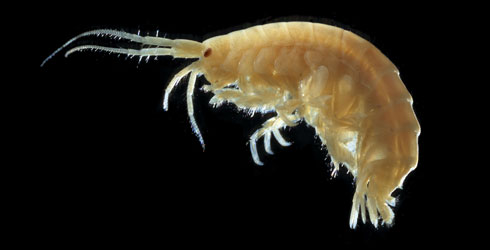
Amphipods
Depth: all depths
Amphipods are shrimp-like creatures. They are usually no more than a couple of centimetres long, but on the deep sea floor some species reach 10 to 15cm in length.
When the carcass of a large dead animal like a squid, shark or whale sinks and reaches the bottom, hundreds or even thousands of amphipods feast on it. Deep sea amphipods have sharp, powerful jaws that slice through flesh.
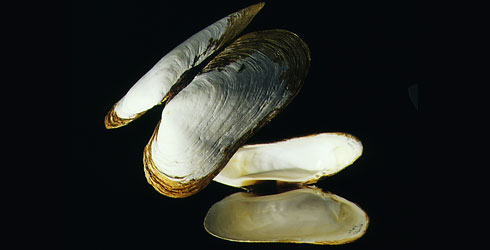
Deep sea clams
Bivalves have two shells hinged together. There are specialist deep sea bivalves, which are relatives of the shallow water clams and mussels.
They are specialists at boring into wood, even though they live about as far from any sources of wood as possible. They attack the hulls of sunken wooden ships, but they were around long before people first sailed over the deep ocean.
Scientists believe that trees from coastal forests must fall into the sea and eventually sink, creating their habitat. This must happen often enough to support their lifestyle.
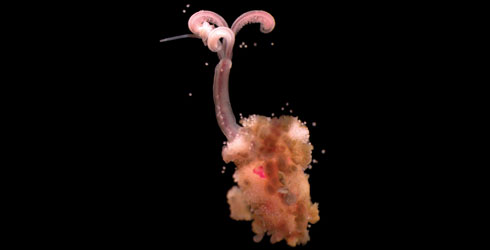
Bone-eating snot-flower worms
These worms are about 2cm long and live on whale carcasses that fall to the bottom of the ocean. They were discovered in 2004 in the North Sea.
They are closely related to some tubeworms, which are known only from undersea volcanoes called hydrothermal vents. Whale-falls may act as a 'stepping-stone' to help the worms disperse through the ocean.
Watch a video about the bone-eating snot-flower worm Osedax mucofloris
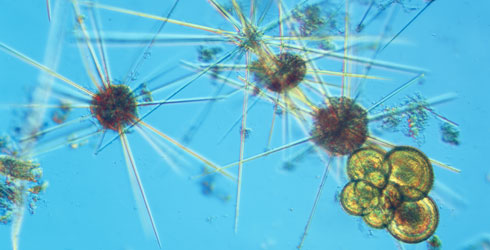
Foraminiferans
These are very simple organisms that live inside cases they have made, in a variety of strange shapes. They make their 'houses' by sticking mud particles or pieces of other animals' shells together.
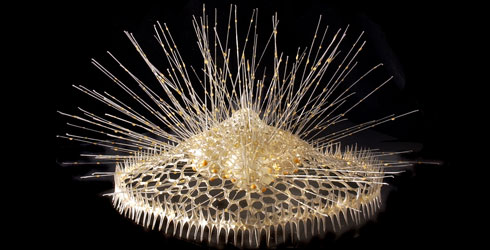
Radiolaria
Animals big enough to be seen with the naked eye are rare on the deep sea floor, but there are thousands that are no more than a few millimetres long. These single-celled animals have skeletons made of a glass-like substance, called silica or strontium sulphate.
This is a glass model of the radiolarian Eucecryphalus schultzei.
Related information
Toolbox
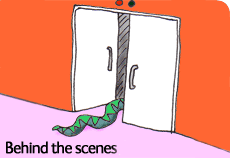
Last year nearly 100,000 specimens were loaned to scientific institutions and researchers worldwide.
- Contact and enquiries
- Accessibility
- Site map
- Website terms of use
- © The Trustees of the Natural History Museum, London
- Information about cookies
- Mobile